Swiss layer farm: higher expenses for a higher income
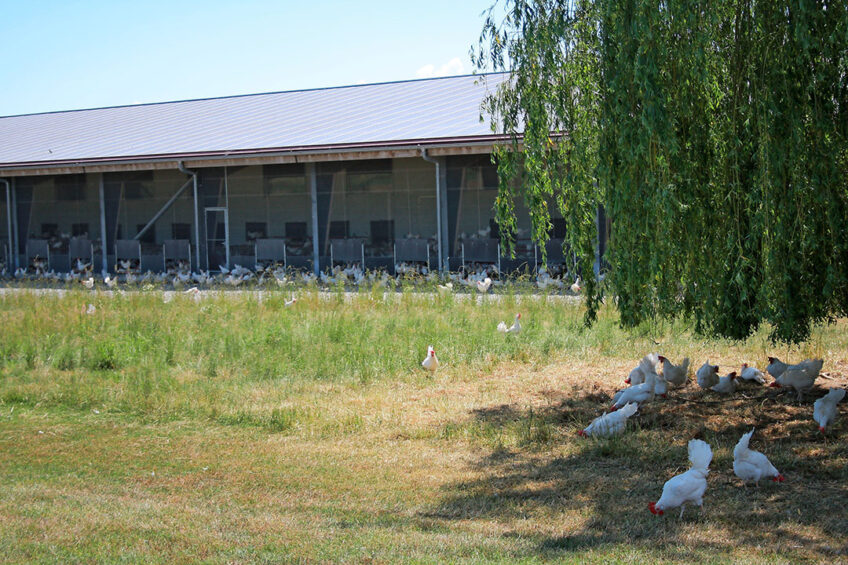
Daniel Würgler in Switzerland does not focus on costs but on revenues. He’ll accept fewer eggs, as long as they’re in the highest-earning weight range. Despite high wages, expensive feed and expensive land, his farm with 18,000 hens is profitable.
On a sunny Monday morning at 11.30, everything is quiet on Daniel Würgler’s free-range laying hen farm. The thoroughly fenced-off area exudes tranquility with at least 15 large weeping willows and fruit trees, a few dozen small wooden shelters and some plastic trampolines that you would more expect for children to play with.
“The standard is 2.5 m2 of outdoor space per hen, but that makes no sense,” says Würgler. “They don’t have 2.5 m2 but 4.5 hectares at their disposal and they only partially use it. Half the hens are outside now but only a few brave and curious hens go to the farthest point. They mainly want to stay in the shade. We offer that in abundance with 75 shade-providing elements.”
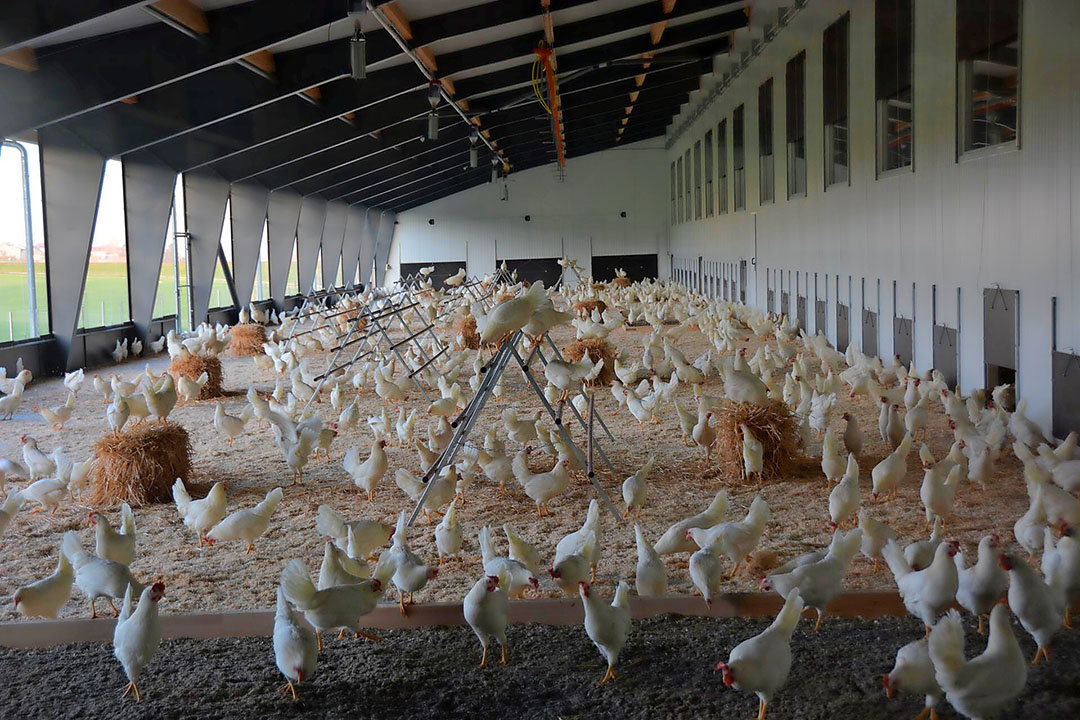
He points to the many feathers on one of the wooden structures. “That is damage from birds of prey. On average, 3-5 hens die every week. That is part of having free-range birds, we have to accept that,” says Würgler.
Deceivingly high egg price
While exploring the premises, the price list for home sales attracts our attention. A tray of 30 second-class eggs for €8, a tray of first-class eggs €14, and a box of 6 first-class eggs €3.50. Egg producers worldwide dream of such prices!
“Indeed, very solid prices,” says the Swiss farmer. “Farm sales are a form of marketing for us. We are proud of our company and really open for visitors. We are the largest egg producer in the region and we don’t want to disrupt the home sales market. That’s why we deliberately set prices above the price level of other providers in order not to distrupt the market. We depend on our good sales contracts; we sell less than 1% of the eggs directly from the farm.”
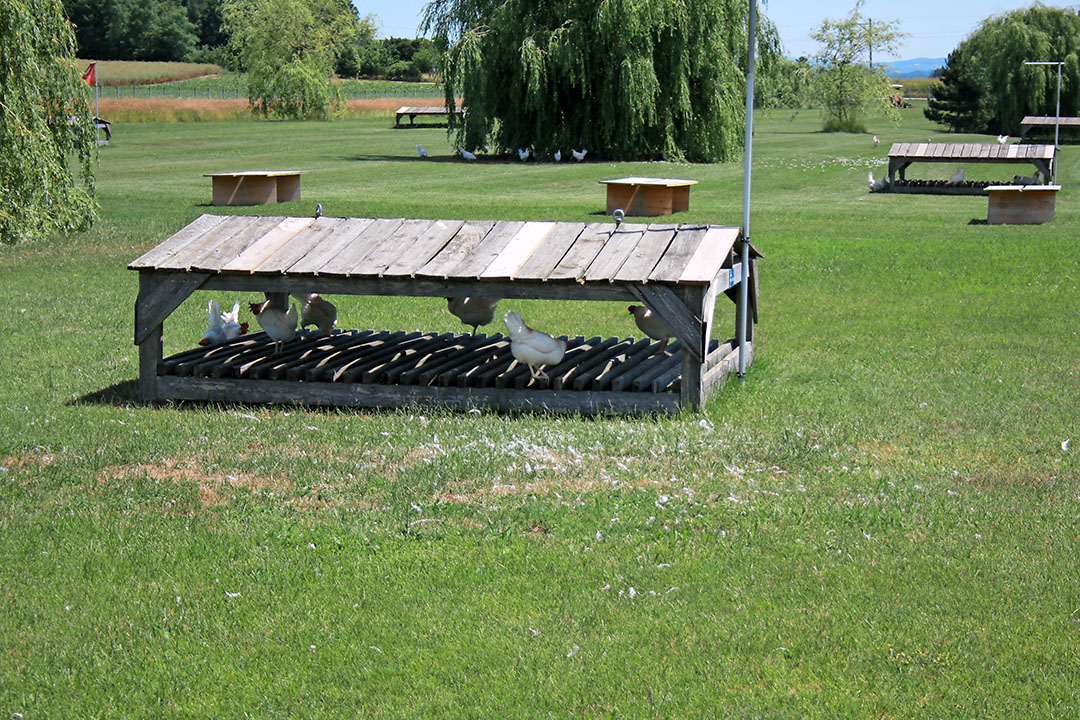
In the skybox, with a good view of the winter garden, 3 system rows of laying nests and the free-range area, the entrepreneur enthusiastically starts to explain: “The Swiss were the pioneers of alternative housing systems. There has been a cage ban for 30 years. Since a referendum in 1991, all animals on every livestock farm must have free-range access and daylight. Poultry farms may not exceed 18,000 laying hens; organic, a maximum of 4,000 hens. All cattle sheds must have partial outdoor access, so a winter garden.”
The winter garden is located only on the left side of the barn and, at over 900 m2, is immense by any standards. “I don’t regret investing in it for a second,” says the business owner, adding that the litter stays “perfectly clean”. The winter garden also prevented the downgrading of eggs during the avian influenza housing orders which lasted the best part of the winter season and was finally withdrawn on 1 May.
Collaboration is paramount
Würgler has worked with 2 other farmers in 3 partnerships since 2003. “Note that we are not integrated. We do things together, share equipment and personnel, but each of us is an independent entrepreneur and we also keep our own additional income.”
At the start of the partnerships all eventualities were covered in contracts. All hours worked and machine costs are registered – partly automatically. “At the end of the year we sit together for half an hour, settle everything and discuss plans for the coming year. That’s fine, it’s all about attitude and confidence. You have to give each other something, then the collaboration remains fruitful. It even survived a business succession which is a time when such a combination can easily fall apart.”
5,200 hours for 18,000 hens
The laying hen branch of the farm requires 5,200 hours of labour per year, which is a 2-person contract in Switzerland. The average working week in agriculture is 50 to 55 hours. The wages are quite steep. An unskilled employee already earns around €3,800 per month. Those who have just graduated from the 3-year agricultural school start at €4,000 per month, an experienced employee will earn more than €5,000 per month. “Every day there are 10 hours of permanent work, a workload shared by 3 people – 3 in the morning, 2 in the afternoon and 1 in the evening.”
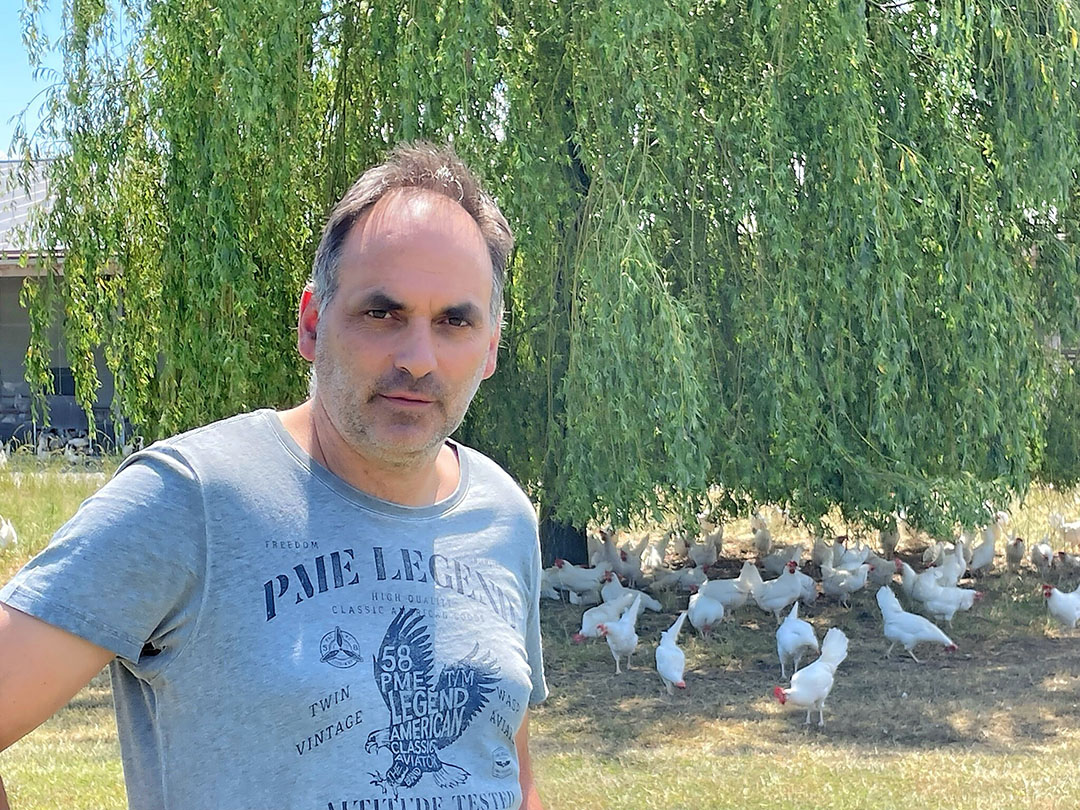
Job satisfaction
Würgler sometimes regrets that he cannot spend all his time at the farm, as he has additional positions outside of the farm as well. “The time spent in the poultry house is very worthwhile. Every time you enter you see points to think about, you see where there is room for improvement. Despite the good results, I continue to focus on further improvement. That is precisely where I get my job satisfaction.”
He mainly controls the egg weight of his LSL Classic hens. “My egg packer pays top price for table eggs weighing 53 to 72 grammes. Any egg that falls outside of this range will yield a third to a half less. In the first year, 85% of the eggs were at the optimal weight. The final round scored 93%; this round seems to be heading towards 92%.”
A second focus area is the proportion of floor and broken eggs. “Take a good look in your house and then you will eventually find the causes. A small mistake can have major consequences. Adjusting the height of a transition in our egg belt by a couple of millimetres has already yielded €6,000 per year.”
High costs and returns
The price levels in Switzerland are very different from those in the EU. “The egg price for free-range eggs is just under 30 cents, the feed price is now €67 per 100 kgs. Arable land costs €60,000 per hectare, and labour costs are double those in the EU.”
The 91×26 m2 barn was built in 2015 and cost just under €3 million, including 2,600 m2 of solar panels with a yield of over 410 mWh. The first 6m of the house are used for storage, an egg room, shower rooms, office and canteen, with the skybox annex meeting room above. “An identical barn built in 2022 cost €3.4 million.”
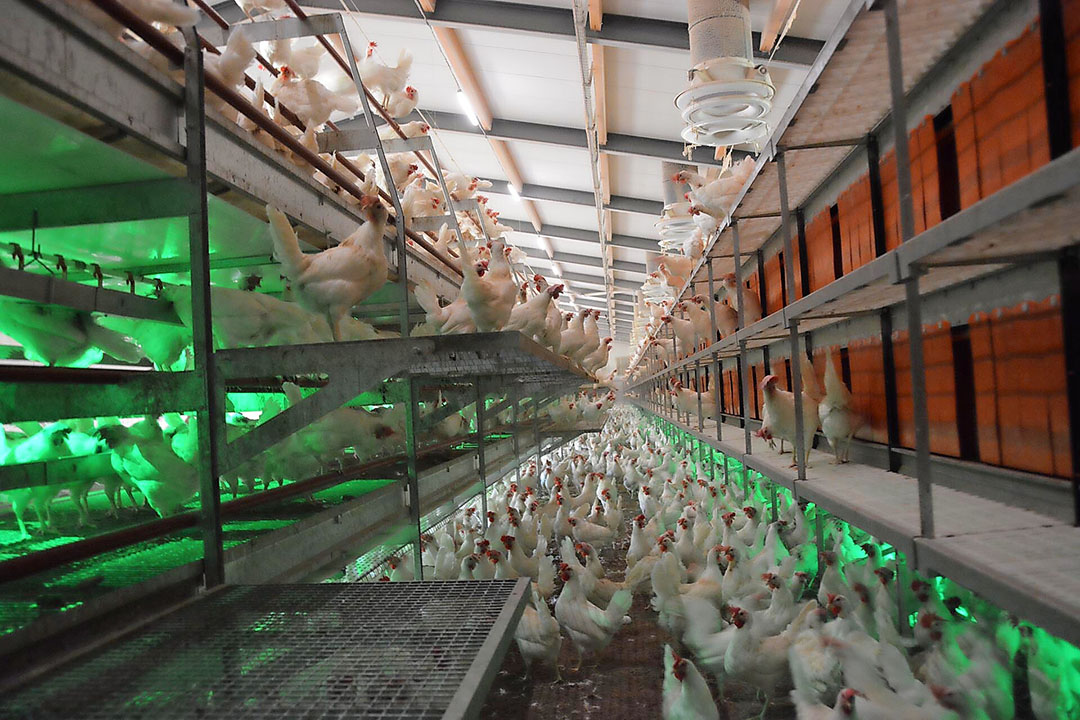
Würgler financed more than 80% of the investment. The bank required security in the form of a 5-year sales contract for that. Since then he has worked with annual contracts. The Swiss entrepreneur admits that he has a good income, partly due to his additional earnings and the salary of his wife who is a teacher. “We are paying back our loans as fast as we can and want to reach under 25% outside funding by 2025. Then we can weather storms better. After that we will continue to optimise; we are not heading for further growth.”
Gallipool Frasses
Würgler’s farm is located in Frasses, Switzerland. The operation encompasses 40 hectares of arable farming and a house for 18,000 laying hens. He has 2 partnerships. The 3 farms now include 180 hectares of arable farming, 18,000 laying hens, 24,000 rearing hens and 100 heads of dairy youngstock in total. Würgler (50) manages the laying hen house with one of the 2 other farmers. He employs 2 permanent staff plus trainees and people who want to see if poultry farming is an option for a future career.









